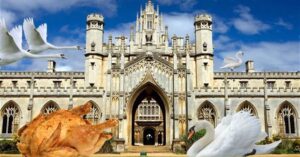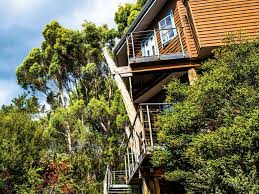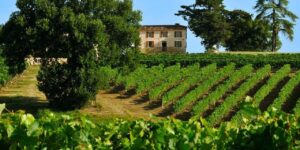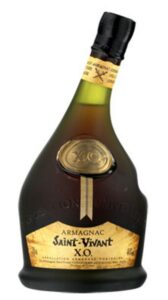I am commencing this blog on Boxing day, another of those dubious holidays related to the British class structure in which boxed trifles were provided to the deserving poor on the day after the upper classes had gorged themselves with exotic meat, forcemeats and sweetmeats – the proclivity of the entitled for languid enquiries “Another swan breast, Andrew? Perhaps another leg, Charles?”
In Great Britain swans have received special protection by the Crown at least as far back as 1482, when King Edward IV authorised the Act Concerning Swans, which made all swans in Great Britain property of the Crown. He signed the law, which remains in force today, not because he wanted to conserve them, but because he loved eating swans. Edward, although born in Rouen, was a Yorkist who was embroiled in battling the Lancastrian Tudors and having seen Henry VI off, he died in his bed. His sons were not so lucky, ending their brief lives in The Tower of London due to a bit of nepoticide by their uncle, Richard, who became the Third.

Like all British idiosyncrasy, only unmarked muted white swans fit into that protected category, and the Queen is even more discerning. She only eats swans from the Thames and its upper tributaries. Elsewhere the Crown has made a deal with the Worshipful Company of Vintners & Dyers in regard to swan ownership and from them to the Fellows of St John’s College Cambridge, who are the only chaps outside the Royal Family able to indulge themselves with roast swan on certain days of the year. These jolly fellows used to have swan traps along their College walls, but the traps have fallen into disuse. The College does not have a separate Warden of the Swans as the Crown does to maintain its swan traps.
Swan meat is said to be gamey, but tasty, presumably it is little different from goose except for the fat. It would be fitting that when “Banjo” FitzSimons achieves his Republican Dinner to mark our eventual break from the 1788 Invasion he should institute a “Swan Song” dinner where the major fare is a muted white swan garnished to acknowledge Edward IV’s other undying contribution – Yorkshire pudding.

I am sure that we could find a suitable South Melbourne-gone-Sydney person to carve our exotic roast. In recognition of our cultural affinity, the Swans regalia has always been red and white. But aren’t Australian swans black?
Huon Pine
in Strahan, a village on Macquarie Harbour on Tasmania’s West Coast there is a two-storied Pole House called Piner’s Loft. It was the labour of love of an extraordinary builder called Dan whose partner was so important to him in providing the inspiration to construct from old Tasmanian wood. In other words, it was built as an homage to the Tasmanian forests. He used only recovered wood, except for the structural poles which were blackwood, and not completely seasoned. However, even with the cracks in the unseasoned wood, blackwood is sturdy and the cracks have stabilised with age. Blackwood is not immediately endangered and is an essential component of the temperate rain forest which covers south-west Tasmania. There are two of these lofty trees along the drive. This drive to the back door has been delivered by the local vicar, who also works in his earth-moving business – literally not only moving heaven, but also earth.

There is another structural pole tucked away in the Loft, and that is one of King Billy Pine. However, in the case of the indigenous pine only recycled wood was used. The floorboards, window and door frames are mostly celery pine, and outside the back door, there is celery pine growing quietly. The fascia board is of Tasmanian blue gum, the only tree whose flower is a State emblem. Blue gum is a tree whose profligate growth has made it declared verminous in California.
Meanwhile, the bathroom door is an exotic, Western cedar.
The Piner’s Loft kitchen is composed of that most beautiful of Tasmanian woods, the Huon pine. Once almost sawn to extinction, these trees live a thousand years and beyond. In the forest, their caterpillar like fronds suggest a tree which may have watched the dinosaur walk. In the wild they are the most unprepossessing trees as they age, with bare arms stretching through the canopy. The trunks are gnarled and twisted; and yet the wood is magical as it is worked.
The Huon pine used to be cut by men called piners, who would travel upstream searching for it because Huon pine grows close to water courses. These piners would stay in rough shelters enduring the rain year round, sleet in winter and mosquitoes in summers. They floated the cut logs down the rivers. They all but cleared the forests of the pine, so now only salvaged wood can be worked. Cutting down a Huon pine is cutting off your inheritance; the remaining trees are protected.

Huon pines contain a natural oil called methyl eugenol, which gives the wood both its legendary durability and its unique fragrance. They grow very slowly, requiring about 500 years to reach the size at which time the trunk can be sawn into timber. Huon timber varies from a light straw to a rich golden colour. Fresh wood surfaces darken after contact with air and sunlight. It is a light, soft and very fine textured wood which is easy to saw, chisel, plane, turn or sand. It is a very good timber for building boats because its close grain, in addition to its lightness and the oil in the wood assists in the waterproofing.
The shavings work well in cupboards to guard against silverfish and other insects which like to eat one’s clothing. It is thus a wood of many seasons.
I am now looking at a Huon pine bowl we mutually presented ourselves as a Christmas present. The aroma is pungent, filling the air as you would expect. It is not the smell of the eucalypt. Roger, the wood turner who made the bowl says he can no longer smell the wood, but for those of us unused to its distinctive pine oil odour, it fills the room.
The wood is known for its “birds-eyes”, flecked dark spots in the wood which is prized. This bowl has waves through the timber like the clouds in a sunset, where the pale yellow of cloud grades into ochre heavens and in so doing catches all the shades in between. It is a glorious piece of carving and like the Loft not only is testimony to the sawyers of the West Coast but also the survival of the fauna and foliage of that State struggling against the barbarian blackberry, bracken and gorse – and bushfire.
This Tasmanian heritage is threatened but unfortunately the government sits by, its hands tucked firmly under it buttocks, while it dreams of dams and concrete. This is what it terms heritage.
But perhaps I am being too critical, but this excerpt from the 2020/21 Tasmanian Budget is indicative of the priorities:
Funding of $75,000 has been provided in 2020‑21, to continue the development of bushfire mitigation legislation commenced in 2019‑20. The legislation aims to improve bushfire mitigation in Tasmania by streamlining approval processes to reduce fuel and mechanically clear vegetation, and ensuring clear accountability for landholders and occupants. Enough to clear the politicians’ country chalets; how thoughtful!
Such is this frugal cornucopia emptied on fire protection, but Captain Courageous stands on his poop deck – and emotes “Thou shalt not enter, ye vermin from other States who dare to violate the purity on my Bailiwick.”
But for the time being, I am looking at this beautiful Huon pine bowl.
Gascon Paradox
This is probably well-known; thus, I apologise for those in the know. Nevertheless, it was mentioned during the preliminaries to cooking a goose for Christmas lunch. Gascony is considered that part of France in the Southwest below Bordeaux and stretches into the Basque country at the foot of the Pyrenees and to Bayonne nearer the coast where the rivers flow from the mountains.

Bayonne is famous for its cured ham – so the story goes, a mediaeval nobleman was out hunting and mortally wounded a wild boar which escaped, only to be found some months later dead in a hot briny pool. The carcass had been so cured by the brine in the intervening months, such that the discoverers waxed lyrical and Bayonne ham was born with all the attendant requirements, which the French love to impose, such as in this case special river salt that is needed to cure it … need I go on?
Gascons, who have affinity to these Bayonne Basques, are believed to be the owners of a gastronomic paradox. To paint a suitably gourmand picture, foie gras is one of the delicacies of Gascony but if one is to eat it one has to turn a blind eye to the process of gavage where the goose is force fed so that its liver suffers fatty degeneration, and then the bird is harvested, its liver to destined inter alia to be spread on toast. I must admit to having had such a breakfast, beats rice bubbles and Vegemite on toast – at least in France. Sorry, I did feel not any pangs – to me it is just an exotic form of dripping .

However, that is the Gascon way. They eat loads of goose and duck fats – saturated fats to the brim – and yet the Gascons live the longest of any Frenchman or woman, with the lowest incidence of heart disease. There are various reasons given – you know, they have an amazing leguminous diet, but the reason I like best is that Gascony is an area where fine dry wine from Bordeaux is produced, and imbibing that in moderation has a positive effect in countering the fat. They even mention, as one moves across Gascony to Condom from where Armagnac, the source of oldest top-flight brandy, has been made since the thirteenth century, one can begin to salivate at the prospect of a cooked goose. Armagnac is the foxglove extract of France.
To make a point, our goose was moreover well and truly cooked.
The roast goose on Christmas Day was perfect; it is a difficult bird to cook well. The line for it being overcooked is thin and then, as experienced by us many years ago, the goose becomes tough and inedible. The traditional cold goose on Boxing Day was well complemented by the fennel and orange salad. The company was perfect in the Padlocked City.
But the Chateau Rothschild will have to wait.
Retreat into Reality
I am so sick and tired of incompetence and/or corruption of government, where deceit is a valued commodity in a Pentecostal cloak, which has now assumed the dimensions once afforded to the Masons’ secret handshake.
So much so, that I have retreated into the reality of the most memorable opening scenes of films that I have seen during my life.
The first is Out of Africa, where the opening scene, Kenya 1913, is of a steam train coursing across the empty savannah Plain. It is a spare train, few carriages and then the first image of Meryl Streep. She has a luminosity as though encased in an aureole. The image is brief.

Then onwards – images of the train coming into focus, crossing more fertile country, always mountains in the background. Night falls, and only the train’s headlamp and lights in the carriage burn bright, and then it is next morning and the train reaches its destination. People, apart from that fleeting glimpse of Merryl Streep as Karen Blixen as appear for the first time. The background wistful yet lush music of John Barry is a perfect accompaniment to this beautiful opening scene.
Then there is number two, Breakfast at Tiffany’s. It is 1961. The vision of a yellow taxi driving down a deserted Fifth Avenue around dawn and depositing this slim figure in black with the beehive hairdo in front of Tiffany’s is one of minimalist elegance. Whether any actress other than Audrey Hepburn as Holly Golightly could have provided such panache with so little movement would have been a challenge. Eating a pretzel and drinking coffee from a paper cup without fumbling is in line with the minimalism.
For an instant, in front of the Tiffany’s window, she is the lady behind the bar at the Folies Bergère in the Manet painting of the same name, and then she is drifting around the corner, down 95th street, finally depositing the food bag in a trash receptacle. All the time, Moon River is being played.
The third is Chariots of Fire where, after the memorial service introduction, we see this phalanx of young men in the training gear of the time, white shirt and shorts running through the shallows, supposedly at Broadstairs in Kent, where the British team was in training in Paris for the 1924 Olympic Games. The fact that they were running in bare feet is emphasised in the first shot. This opening sequence was shot in Scotland near St Andrew’s Golf Course and that the other runners were essentially a bunch of golf caddies is just too much inconsequential information. The fact that the final clip from this opening scene sees the running pack traversing the first hole at St Andrew’s, rather than the Carlton Hotel’s lawns on the Kent foreshore, did not diminish the expectations for a film which celebrated an idealistic romantic notion of heroism. That is the reality I like – and the Vangelis theme helped.
I could not summarise the theme better than the composer himself – Vangelis was a somewhat more convenient name than Evángelos Odysséas Papathanassíou.

He recalled the dilemmas of Eric Liddell, the Scottish athlete who would not run on a Sunday because it was contrary to his Christian beliefs; Lord Lindsay, who selflessly gave Liddell his slot in a weekday heat so that the Scot could compete in the Olympics; Harold Abrahams, the Jewish runner ostracised by the establishment. All were men who would not compromise on their values, no matter the cost.
“If you look for truth you have to be courageous. My main inspiration was the story itself. The rest I did instinctively, without thinking about anything else, other than to express my feelings with the technological means available to me at the time.”
The title “Chariots of Fire” brought me back to the where and now. The term derives from the Old Testament and it is adopted as a metaphor by William Blake. Jerusalem, the choral interpretation of his poem, is embedded in my brain. We sang it so often at school. The men above deserved a “chariot of fire” as their accolade.
If Blake could descend in a chariot of fire and see our Australia, would he wonder whether we could ever build Jerusalem among our own dark satanic coal mines. But we should finish the anthem – and the race which both Abraham and Liddell ran beyond their Olympic participation is equally applicable to us Australians – a universal call
I will not cease from Mental Fight,
Nor shall my Sword sleep in my hand:
Till we have built Jerusalem
Safe as a Bronte Beach Santa Party
Anonymouse
First fireworks, and now cricket – what is the NSW Government thinking? Picture this: in the red corner, Cricket Australia, the SCG and the McGrath Foundation, and in the blue corner, “the best medical advice” of NSW. So, who won the bout between cricket and good public health sense? Well, who do you think? But the more pertinent question is who lost, and the answer is the people of NSW.
At the same time as the Premier of NSW has the northern beaches locked up and the best medical advice to everyone in greater Sydney is don’t go out for new year’s eve, apparently it is perfectly OK for up to 125,000 people to travel by public transport to the SCG, mingle as they enter and exit and sit in the stands unmasked (that’s 25k for each day of the test). How can this be so?
Memo to Gladys: Cancel the cricket, give the McGrath Foundation the million or two dollars that it raises at a Sydney test (and in the long run that will be a bargain compared with the massive cost of many COVID cases and a protracted lockdown that inevitably will be caused by the super spreader test), send the cricketers and their entourages packing to somewhere much safer for them and for NSW. Stop mucking around with the lives of the people of NSW, lock down greater Sydney and mandate mask wearing immediately until you actually have this outbreak under control.
With the Northern Beaches and Croydon outbreaks growing and the potential for weeks or months of lockdown looming as happened in Melbourne, having fireworks and allowing five days of cricket with spectators to go ahead is about as responsible as the Bondi Beach Santa party. Time will tell – if the cricket goes ahead – whether all the predictions of it being the super spreader of all time are realised. If so, NSW’s world best contract tracing system won’t amount to a hill of beans. We still don’t know who was the source of the Avalon cluster, or who has pushed so hard for the Test to go ahead in Sydney and why the NSW Government is taking such a huge risk in allowing it?

Mouse Whisper
I get sick and tired of hearing this doggerel. You know that one that starts “A for horses”… “B for mutton”….”C for yourself” and ends up “X for breakfast”, “Y for husband” and “Z for breezes”. For the least comprehending of you guys read, in order:
Hay
Beef
See
Eggs
Wife
Zephyr (incorporates the “for”)
I bet you are all slapping your thighs with laughter and emoting “How clever”. But it is a clue to the reason for the title of the blog in the twisted mind of my mausmeister … if you can be bothered. I believe he is going to publish the hundred Blog title names after he reaches that centenary blog.

